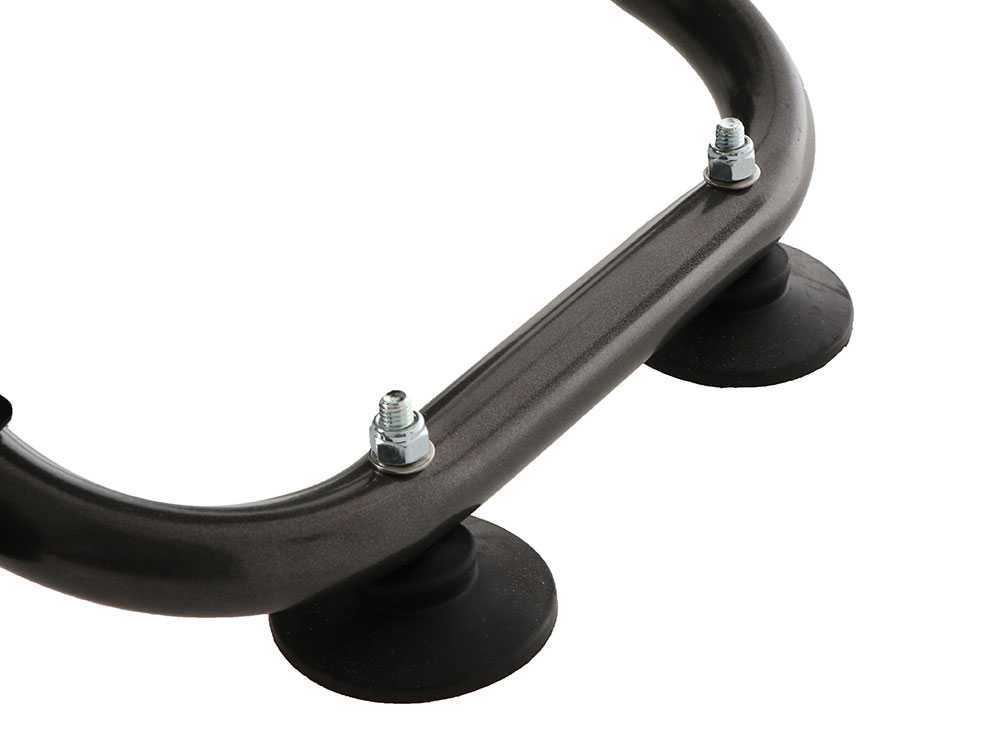A comprehensive guide to purchasing the best petrol pressure washer, with many useful tips on their use and maintenance.
The purchasing guide to Choose the Best Petrol Pressure Washers, Comprehensive and Edited by Real Washing and Cleaning Experts.
Pressure washers are among the most popular and renowned machines for cleaning outdoor areas, as well as washing cars, equipment, outdoor furniture and much more…
There are many aspects to consider before purchasing one, so how do you choose the best pressure washer model?
In this guide we will focus in depth on petrol pressure washers models.
CONTENTS
1. Introduction
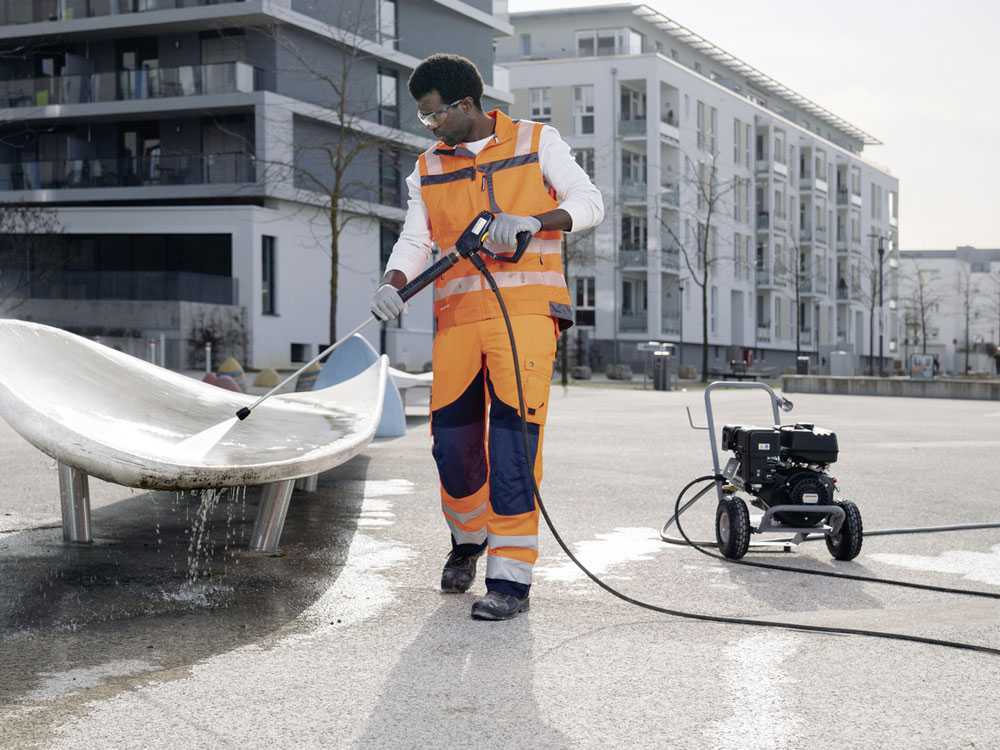
Petrol pressure washers are the alternative to electric pressure washers and are intended for all uses where it is not possible to connect the machine to the power supply.
Petrol-powered models can be used anywhere thanks to their petrol engines.
Their use is the same as for electric pressure washers, meaning they can clean outdoor areas, floors, equipment or garden accessories easily and effectively, however they can unleash more power and pressure, especially compared to single-phase electric models, thanks to the presence of a motor that can reach up to 400 cc displacement.
These models are particularly appreciated by professionals and companies, especially those with larger displacements due to the power of the motors, which allow them to reach pressure values ( Bars) and water flow rates (L/min or L/h) that only the most powerful three-phase electric models can achieve.
On the other hand, with the presence of an internal combustion engine one has to take into account a higher cost compared to an electric model, higher noise, more frequent maintenance and reduced manoeuvrability, especially due to the increased weight.
We sum up in a table the main characteristics and distinctions between electric and petrol pressure washers, with the respective values for Pressure, Flow Rate, Weight and Scope of Use.
| Max. Weight | Max. Pressure | Max. Flow Rate | Scope of Use | |
| Petrol models | 70 Kg. | 310 Bar | Over 15 L/Min. | Lack of access to a power supply |
| Single-phase electric models | 30 Kg. | 200 Bar | 11 L/Min. | Especially for domestic use |
| Three-phase electric models | 65 Kg. | 270 Bar | 15 L/Min. | Private and professional use |
2. Engines
As mentioned in the introduction, the main feature of this category of pressure washers is the petrol engine, which is recoil-started, and which, depending on the different displacements, delivers power of up to 4 kW and more.
The power of the engine, combined with the pump on the machine, also influences two other very important values to be taken into account in a pressure washer: flow rate and pressure.
We will talk specifically about these two aspects later in the guide, but for now, we can summarise that the flow rate indicates the amount of water that is delivered by the machine, while the pressure indicates the power of the water jet itself.
The main brands of petrol engines powering this type of pressure washer are:
- Kohler;
- Loncin;
- Honda.
It is worth emphasising the guaranteed performance and durability of Honda engines, which in pressure washers represent the highest and most professional power range.
These machines are intended for intensive use in industrial environments, develop more power than all other engines and also ensure high pressure and flow rates.

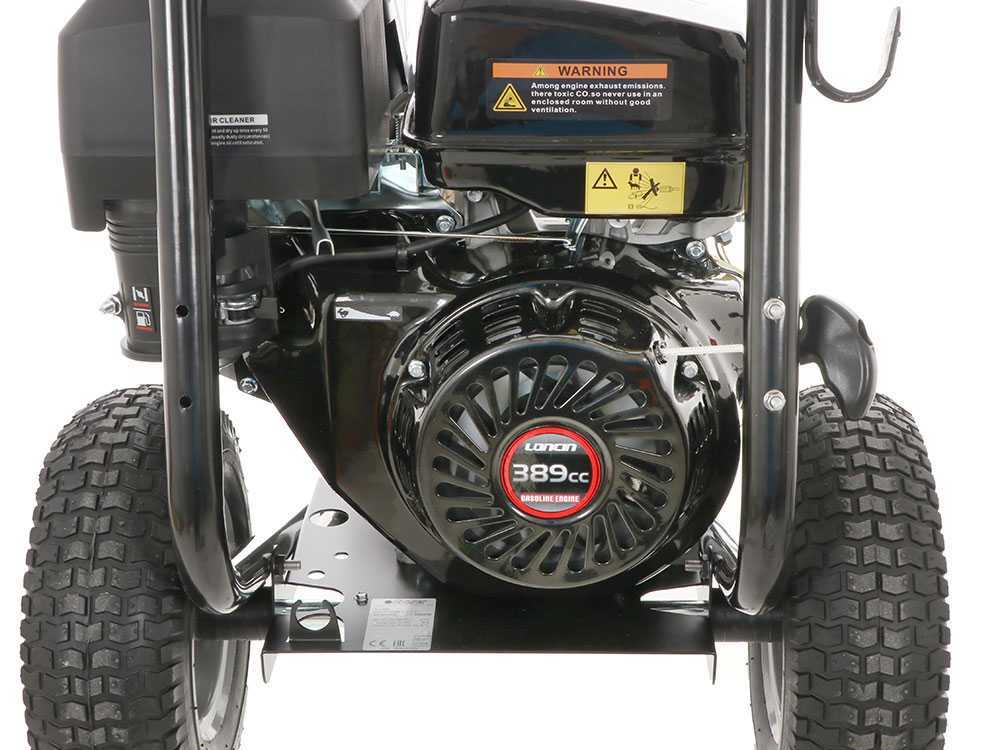
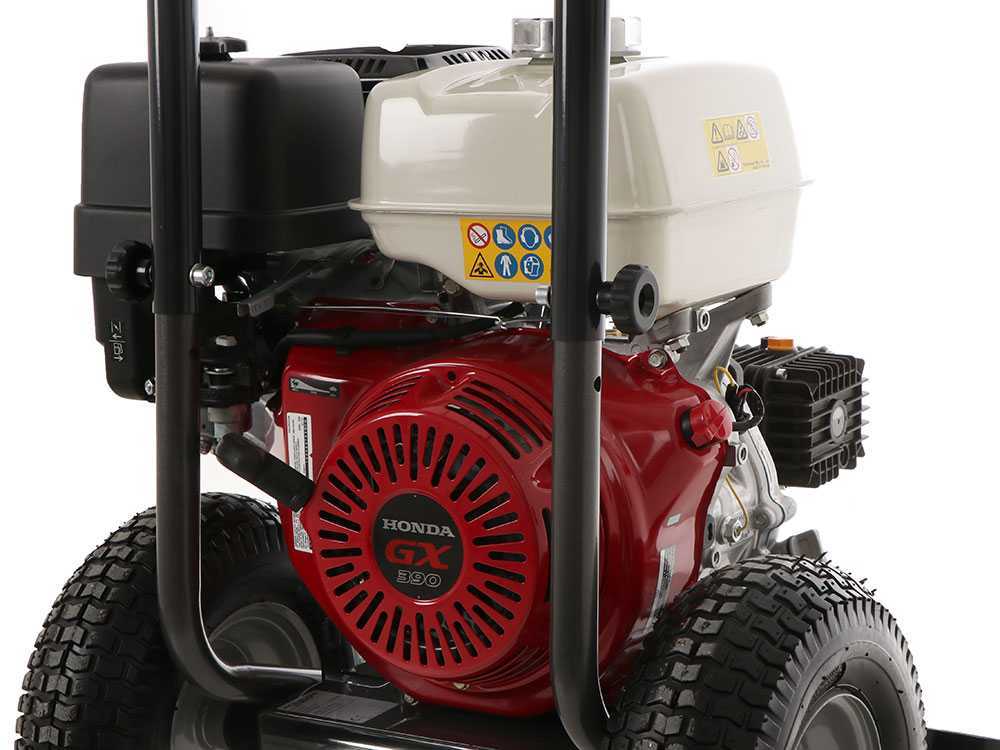
Petrol-powered pressure washers are all fitted with 4-stroke petrol engines with ‘OHV’ technology, i.e. overhead valve technology.
There are numerous advantages over more classic 2-stroke engines:
- Easy to start up even after long periods of inactivity (more than two months);
- Fewer problems with fuel freshness;
- Quieter;
- Reduced consumption;
- Greater reliability.
Four-stroke engines also allow easier and quicker maintenance, the main recommendation being only to periodically check the oil level and replace or refill it when necessary.
3. Levels of use and displacements
Let us then compare the various models of petrol-powered pressure washers with their different displacements for their respective levels of use:
- Portable Pressure Washers → 100 – 160 cc.
- IHobbyist – Semi-professional Pressure Washers → 170 – 220 cc.
- Professional Pressure Washers → 250 – 400 cc.
3.1 Portable Petrol Pressure Washers
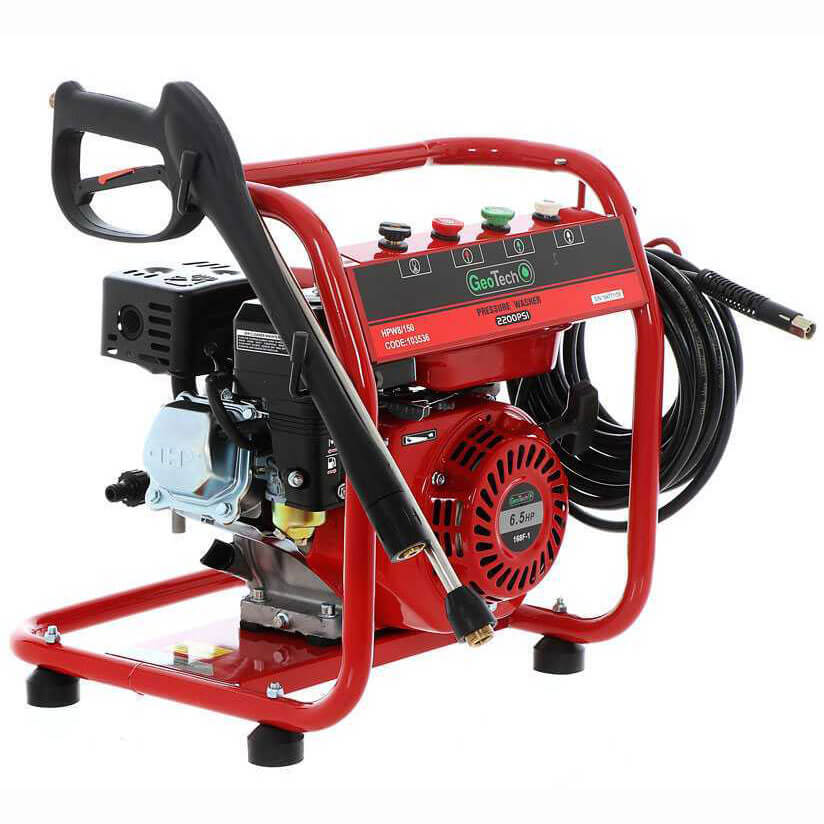
Portable petrol pressure washers are designed to perform all the functions of petrol-powered pressure washers with the option of being easily lifted wherever needed, thanks to the practical integrated handles.
Obviously, in order to be transported by the user, these models are not too large or too heavy, so the engine will also have a limited displacement, yet still offer excellent performance for hobby and private use.
The average displacements in this category range from 100 to a maximum of 160 cc, with a total weight raging from 15 and 22 kg.
| Level of Use | Weight | Displacement | |
| Portable Petrol Pressure Washers | Hobbyist | 15 – 22 Kg | 100 – 160 cc |
3.2 Hobbyist – Semi-professional Petrol Pressure Washers

Petrol-powered pressure washers between 170 and 200 cc are the trade-off between portable and more powerful models.
They mount engines with displacements ranging from 170 cc in the smallest models up to 220 cc, with power ratings that can even exceed 4 kW.
Consequently, these models are also heavier than the portable ones and cannot be lifted by one person, but are rather moved by the operator thanks to the pair of wheels at their base and the handle.
Weights can range from 30 kg for pressure washers with smaller engines up to 40 kg for larger engines.
| Level of Use | Weight | Displacement | |
| Hobbyist – Semi-professional Petrol Pressure Washers | Hobbyist – Semi-professional | 30 – 40 Kg | 170 – 220 cc |
3.3 Professional Petrol Pressure Washers
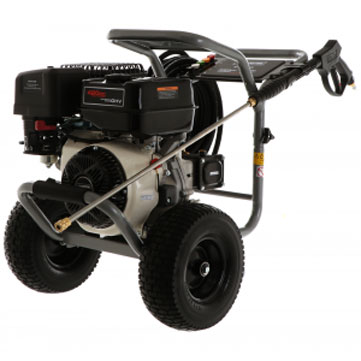
The most powerful pressure washer models are fitted with petrol engines with displacements of up to 400 cc, for considerable power and performance.
A large engine also entails a lot of weight, some models can weigh up to 60 kg, so the transportation method is always the same, i.e. they are towed by the operator, using large pneumatic wheels and an integrated handle.
Their high performance makes them ideal for use in agriculture and industry.
| Level of Use | Weight | Displacement | |
| Professional Petrol Pressure Washers | Professional | 40 – 60 Kg | 250 – 400 cc |
4. Flow rate and pressure
Flow rate and pressure, are among the most important aspects to consider when purchasing a pressure washer.
Flow rate, in particular, is a figure that is often overlooked, but which expresses the machine’s real cleaning capacity.
It denotes the strength of the water jet coming out of the lance, it is expressed in L/min, (litres per minute), its value may vary from model to model, but it usually never falls below a minimum of 7 litres per minute, given the presence of a petrol-powered engine.
So what does a pressure washer with a high flow rate entail?
The water jet of a pressure washer with a high flow rate, such as 12 L/min. , will create a consistent, full-bodied jet of water, which will also result in much easier cleaning.
Let us therefore recap in a table, how the water flow rate varies with increasing displacement.
| Flow rate | Displacement | |
| 7 – 9 L / Min. | 100 – 200 cc | |
| 9 – 12 L / Min. | 200 – 250 cc | |
| 12 – over 13 L / Min. | 250 – over 400 cc |
The pressure, on the other hand, refers to the ‘force’ with which the water escapes from the pressure washer’s gun, and this too is a variable value, directly influenced by the power developed by the petrol engine.
It is measured in Bars, and in petrol models the pressure rarely drops below 150 Bar even in less powerful machines.
Evaluating this data is as important as it is subtle: In fact, it is very important to choose a machine with the right pressure for your needs. Excessive water force can easily ruin car bodies, the paint of garden furniture or railings, etc.
Let us now sum up how the Bars of water pressure vary with increasing displacement.
| Pressure | Displacement | |
| 150 – 180 Bar | 100 – 200 cc | |
| 180 – 200 Bar | 200 – 250 cc | |
| Over 200 Bar | 250 – over 400 cc |
5. Axial and Linear Pumps
The pump, in a pressure washer, is one of the most important components to consider, as it is responsible for delivering the high-pressure water jet.
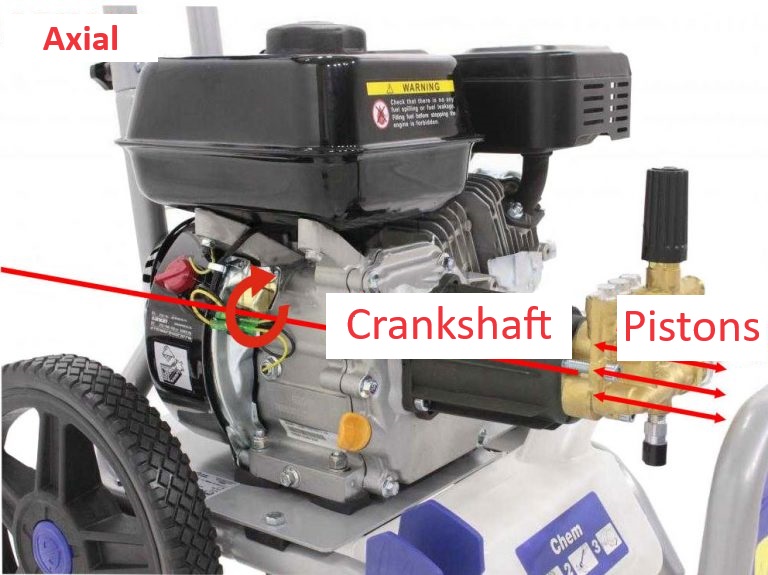
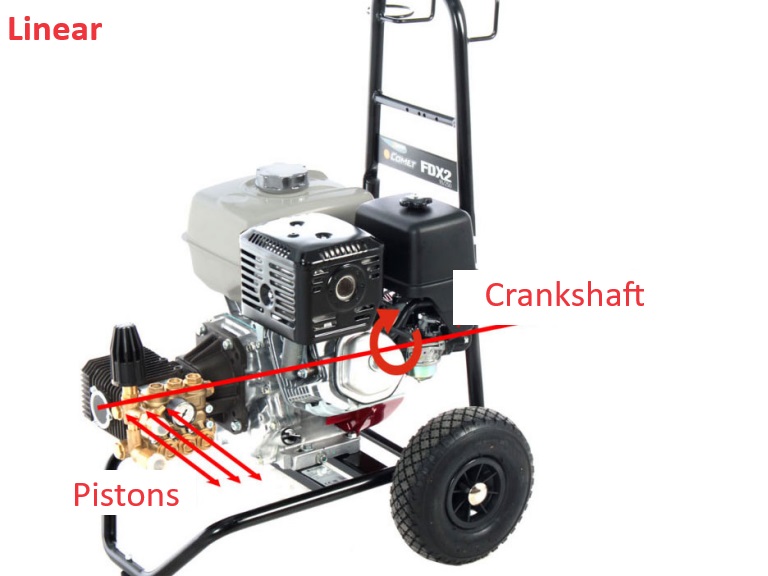
- Axial Pump: The most common type of pump on these machines, it provides excellent performance at a low price.
Made of aluminium, or stainless steel for professional models, it mounts the cylinder head directly in front of the crankshaft, where there is a plate that swings the pistons back and forth. - Linear Pump: The pump model for highest performance.
The piston move in the same way as in a car, moving up and down, and mounting the pistons perpendicular to the crankshaft.
The pump heads mounted on high-pressure cleaners can also vary, depending on the material they are made of:
- Aluminium cylinder head: The cheapest and most basic alternative, usually found in hobbyist machines;
- Brass cylinder head: Brass is one of the hardest metals in nature, therefore heads made of brass ensure high performance for professional and industrial settings;
- Nickel-plated brass cylinder head: An even stronger variant than brass one is found in the more powerful models for strictly professional use.

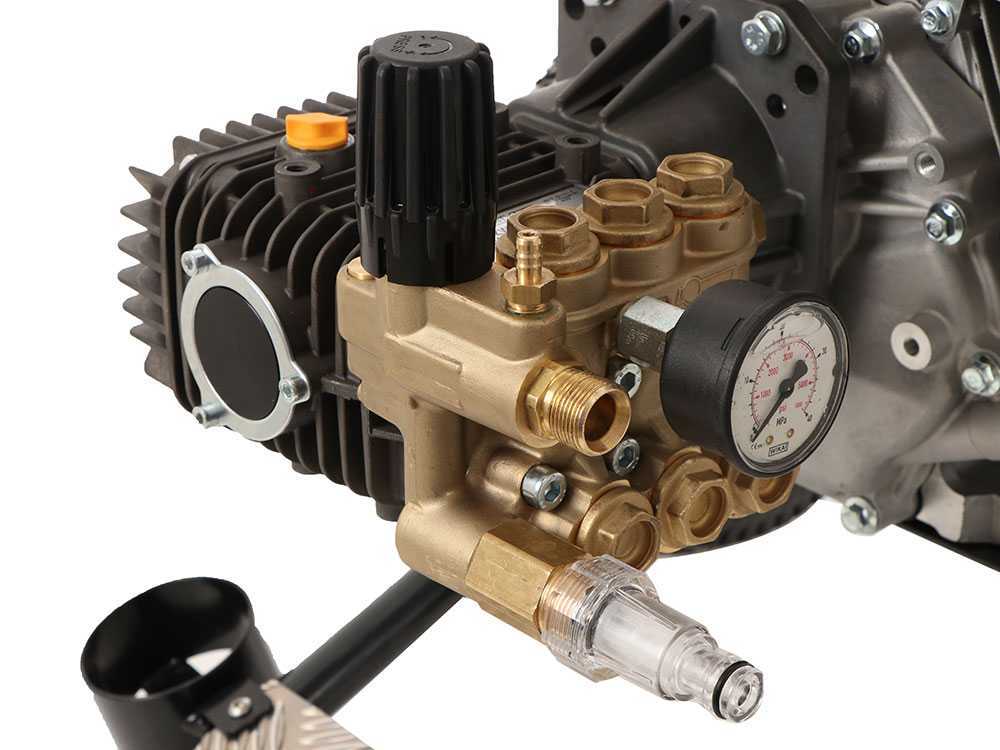
The pistons – the most visible and exposed part of the pump – can also vary in material depending on the level of the machine, and can be in:
- Steel
- Ceramic steel:
- Ceramic:
6. Accessories and other features
When purchasing a pressure washer, it is possible to have, or purchase separately, numerous accessories that allow for extra work, other than the classic high-pressure water jet cleaning.
Among the various accessories available for hot water pressure washers include:
- Detergent tank;
- Rotating nozzle;
- Hose reel.
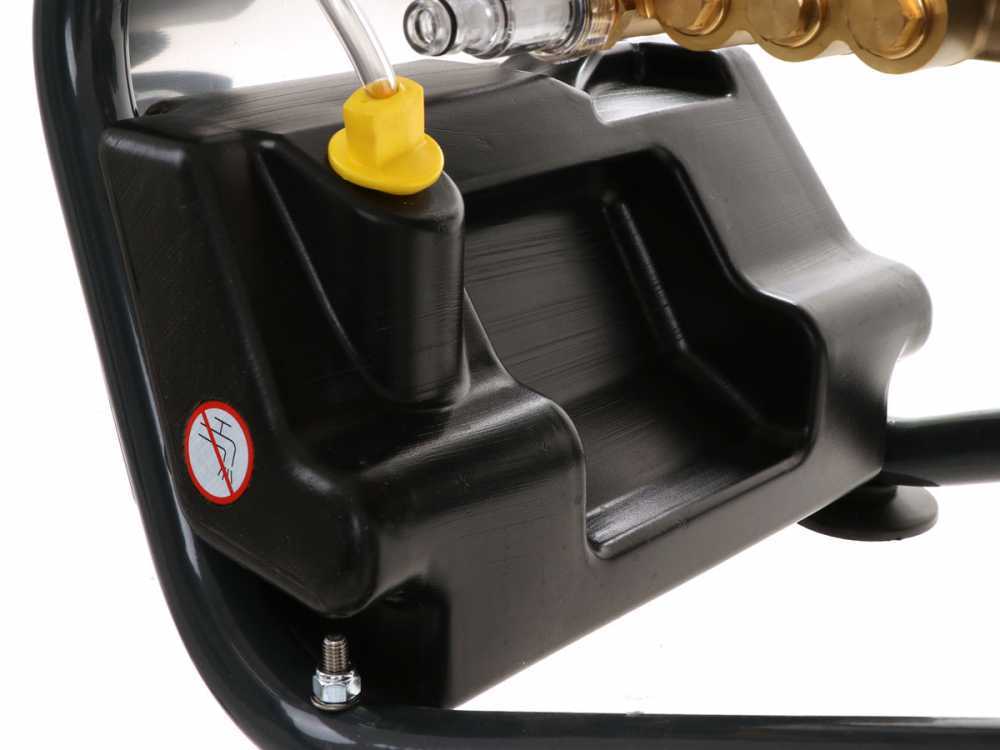
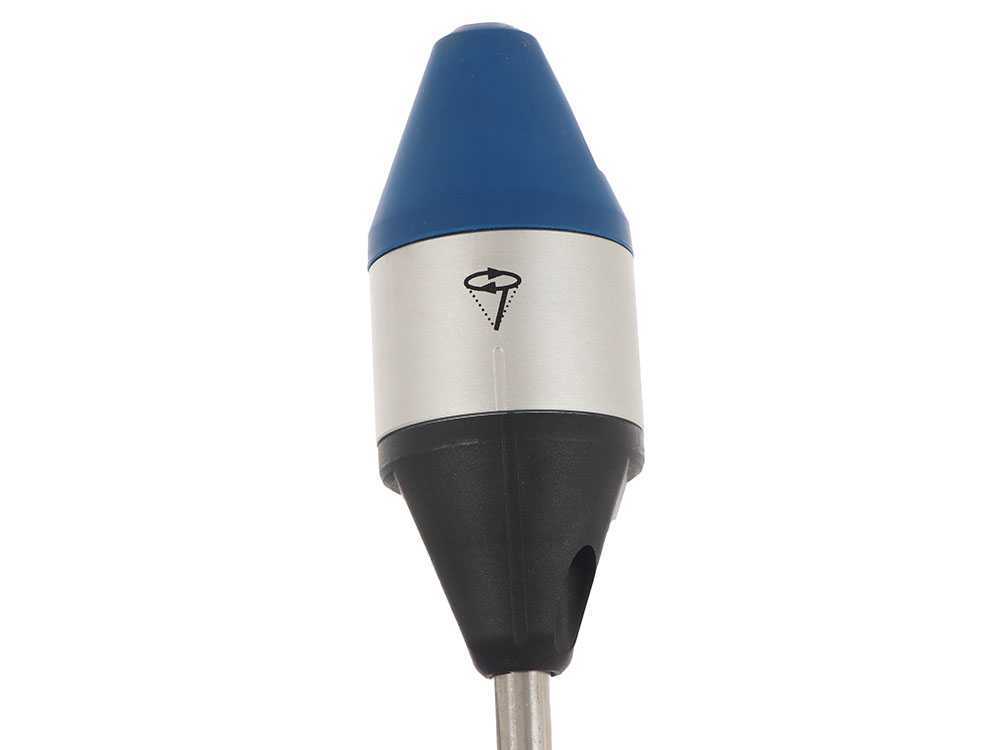
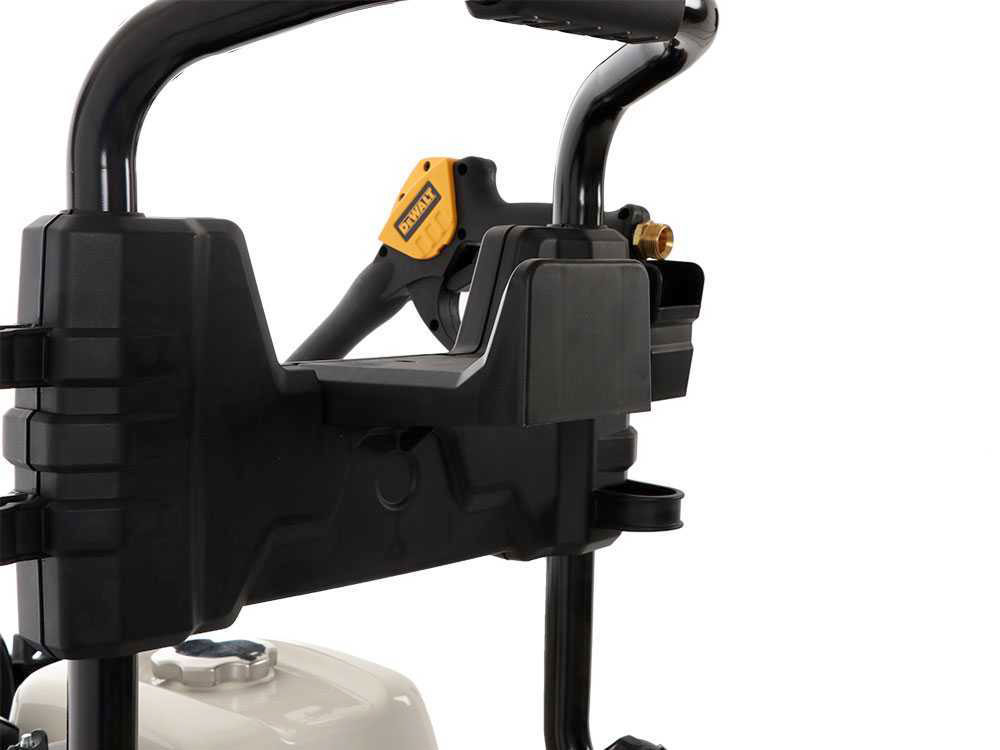
The detergent tank, which can be integrated on both the machine and the lance, contains the chemical detergent needed for cleaning.
Another popular and widely used accessory is the rotating nozzle, the final attachment of the lance that sprays water with a high-pressure rotating jet.
The hose reel is a special hook that allows the hose to be rolled up for faster storage of the machine.
Other important features of this pressure washer category are:
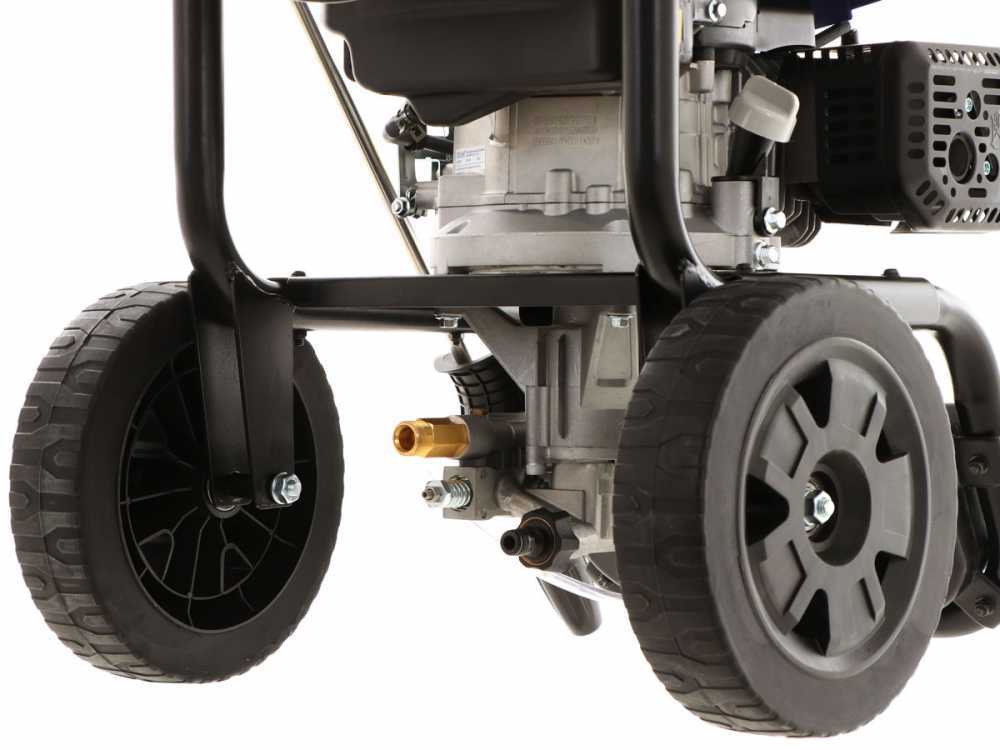
- Rear wheels: They facilitate moving and shifting the machine on all types of surfaces, even those that are not perfectly smooth or slightly uneven such as construction sites or outdoor spaces.
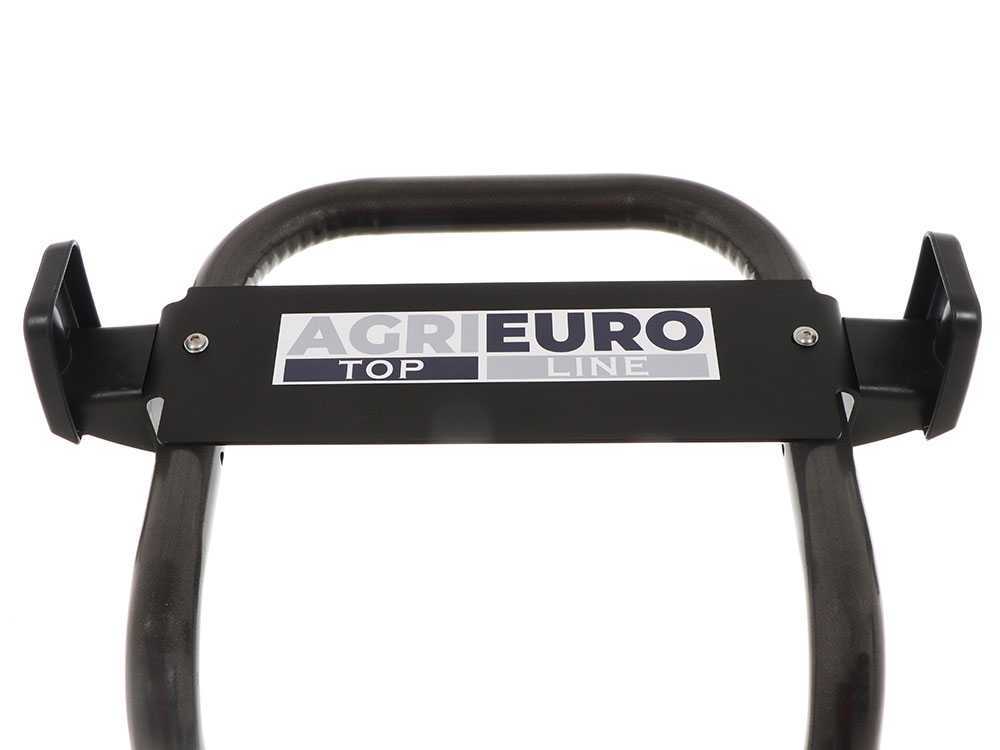
- Handle: This component, like the rear wheels,allows for more comfortable and easier movement of the machine.
Often adjustable to different heights, it helps the operator when moving the pressure washer, especially in larger and heavier models.
- Support grommet: An anti-slip and anti-vibration grommet allows the machine to be rested, preventing accidental movement and reducing vibration during use.
Often times there can be more than one grommet, depending on the size of the engine and thus of the machine.

